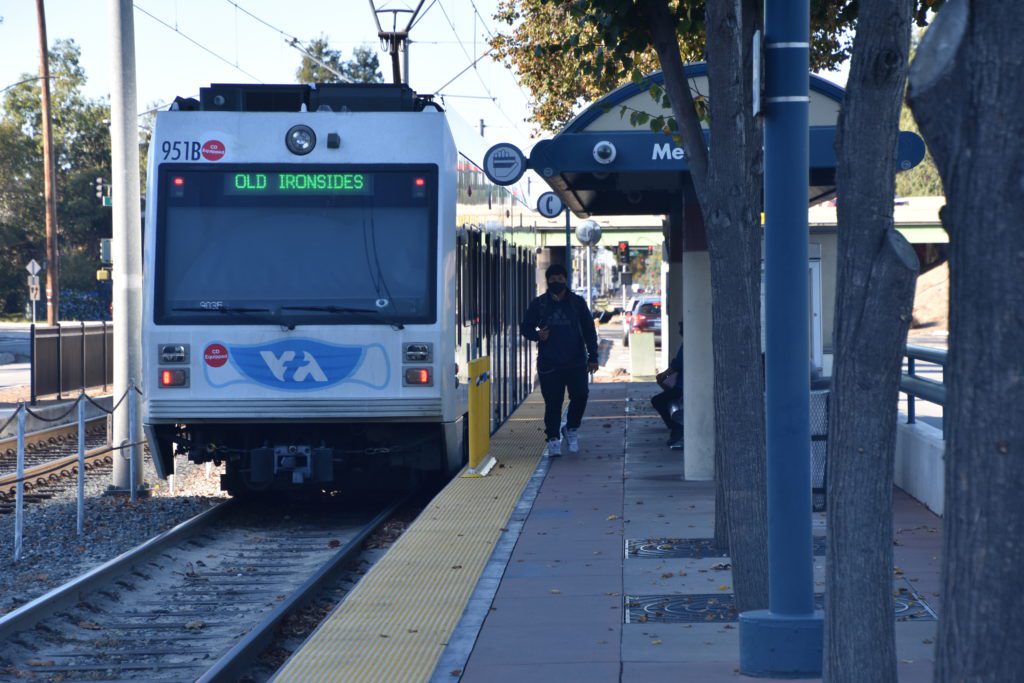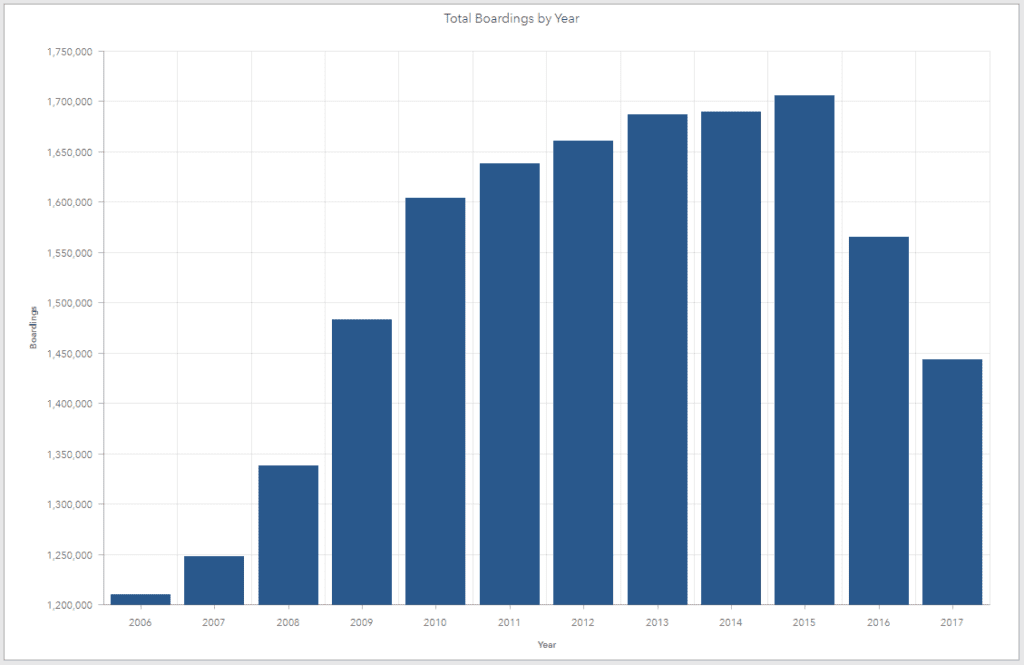The Santa Clara Valley Transportation Authority is dealing with tight budgets, low ridership and out-of-touch officials, even as they discuss expanding to new technologies.
A San José Spotlight survey found that just one of the 18 lawmakers who oversee and govern the troubled transit agency—of those who responded—actually ride its buses and trains.
San José Spotlight contacted all 18 VTA board members to ask if they ride public transit. Only six responded—Morgan Hill Mayor Rich Constantine, Palo Alto Vice Mayor Patrick Burt, San Jose Councilmember Raul Peralez, Mountain View Councilmember Margaret Abe-Koga, San Jose Vice Mayor Chappie Jones and county Supervisor Joe Simitian. Peralez was the only one who confirmed he has regularly used VTA transportation in the past—though he said he’s not used public transit in about a month.
With decreasing ridership caused by the COVID-19 pandemic, fear of gun violence and growing frustration with VTA’s public transportation, funding is a problem for the transit agency.
However, three Civil Grand Jury reports concerning VTA found its governing structure is the root of the problem. The VTA Board of Directors is a rotating group of 18 elected officials across all cities in Santa Clara County. Under the existing structure, there is no guarantee that board members have any special expertise in transit, infrastructure or project management. A proposed bill by Assemblyman Marc Berman to restructure the board’s selection has been shelved at his request since May, according to California Legislation Information.


Who rides VTA?
Despite its function as the vital public transportation system of the South Bay, many elected officials who serve on the board do not use the VTA frequently—or even at all. Those who do point to flaws in current operations.
Constantine said he hasn’t needed public transportation at all since the beginning of COVID-19 pandemic because government meetings have gone virtual.
Jones confirmed he does not use VTA on a regular basis. Likewise, Burt does not use VTA regularly, citing that North County is “better served” by Caltrain.
Transit activists have pointed out that many board members do not use the very service they represent.
“I would like to see (the VTA board) use public transportation one time a month or one time a week,” said Monica Mallon, founder of Turnout4Transit and San José Spotlight columnist. But right now, Mallon said, it’s impractical for officials to use VTA. Despite this, she believes the board is “understanding” of issues regular riders face.
Eugene Bradley, founder of Silicon Valley Transit Users, told San José Spotlight it’s a “huge issue” that many board members don’t use VTA on a regular basis.
“There is little empathy for those who ride VTA when those who manage it (don’t) ride themselves,” he said.
VTA felt the impact of COVID-19 deeply, but ridership has been decreasing for years before the pandemic. Public records show that from 2015 to 2016, total boardings decreased by 140,889. From 2016 to 2017, the decrease was an additional 121,262.


“There aren’t enough options to get (people) out of their cars,” Constantine complained about VTA’s flaws. Commuters in the South Bay are turned off by slow and unmanageable transportation options, he added.
Peralez is the exception and rides VTA. Still, the trains are so slow, the downtown councilmember said, that he could beat the light rail on his bicycle.
“I’ve been a user of the (public transit) system since I was like four,” Peralez said.
Some riders avoided VTA services after a mass shooting in May left nine people dead before the gunman committed suicide. Light rail trains also shuttered for almost three months following the tragedy as employees recovered from trauma and the agency scrambled to fill positions, taking another bite out of the agency’s recovery.
While there are ongoing issues with the public transportation system, VTA board members are discussing ways to improve the service.
“There are a number of technologies that show great promise,” Burt said.
This includes a potential new light rail system that could work both on tracks and on roads, which exists in other cities in the world, according to Peralez.
“That conversation about (new technology) has been ongoing,” he said.
Peralez said the biggest challenge facing VTA is securing more funding.
“Getting enough revenue—there’s not one thing the VTA can do to solve the problems it currently has,” said Peralez. “It’s easier said than done.”
Contact Marie Louise Leone at [email protected] or follow @marloleone on Twitter.



Leave a Reply
You must be logged in to post a comment.